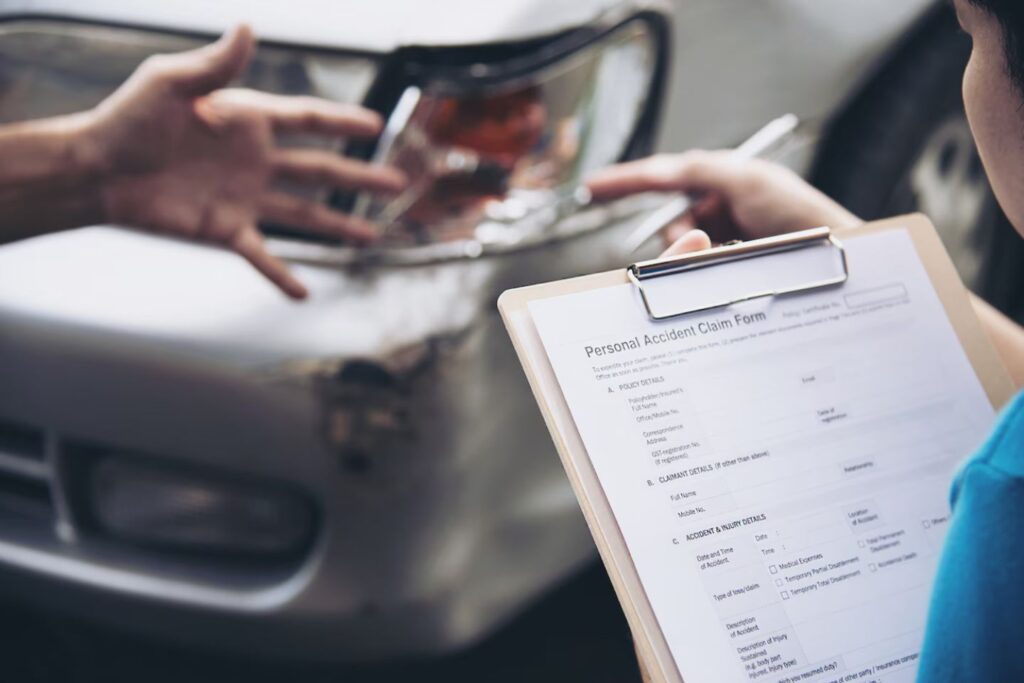San Mateo has been experiencing an increase in accidental deaths each year. According to the 2022 report from San Mateo County, the area witnessed a concerning 207 accidental deaths. Furthermore, data from SWITRS (2018-2022) indicates that there have been an average of 34.8 fatal crashes annually in the area.
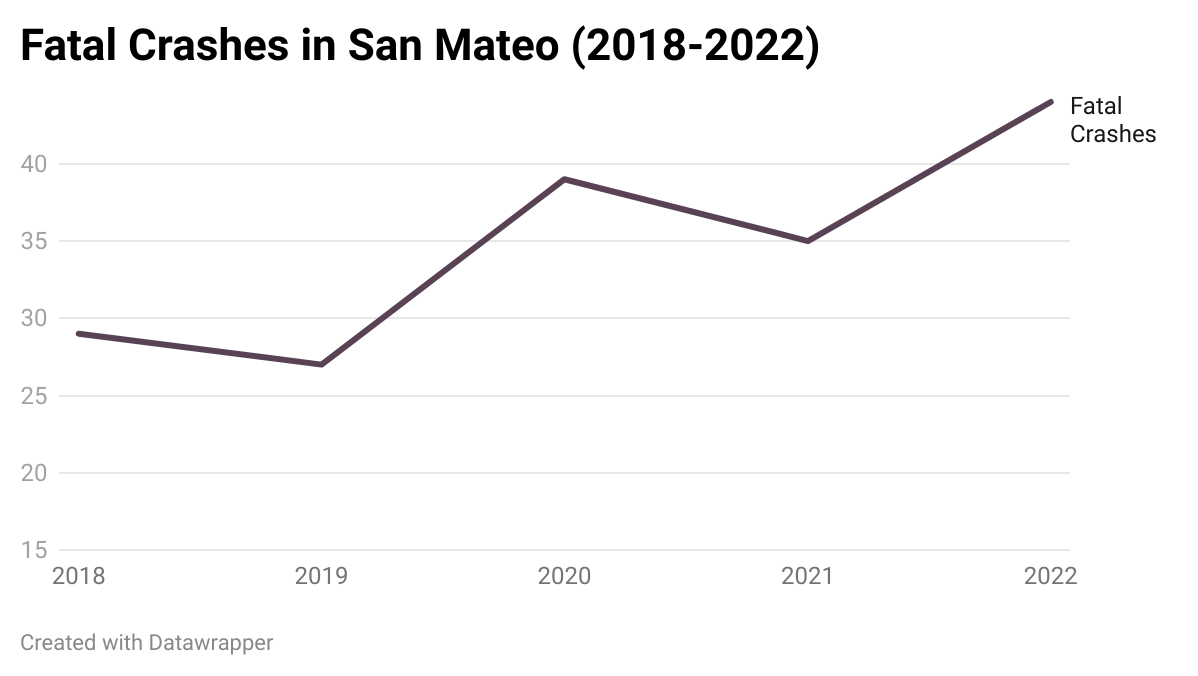

Accidents, often unforeseen and always unfortunate, can leave a lasting impact on your life. If you’ve been involved in a San Mateo accident, it’s crucial to know your rights to compensation, especially in cases of personal injury.
This article provides essential information on navigating the legal landscape to secure the support and compensation you deserve.
How to Respond to an Accident in San Mateo?
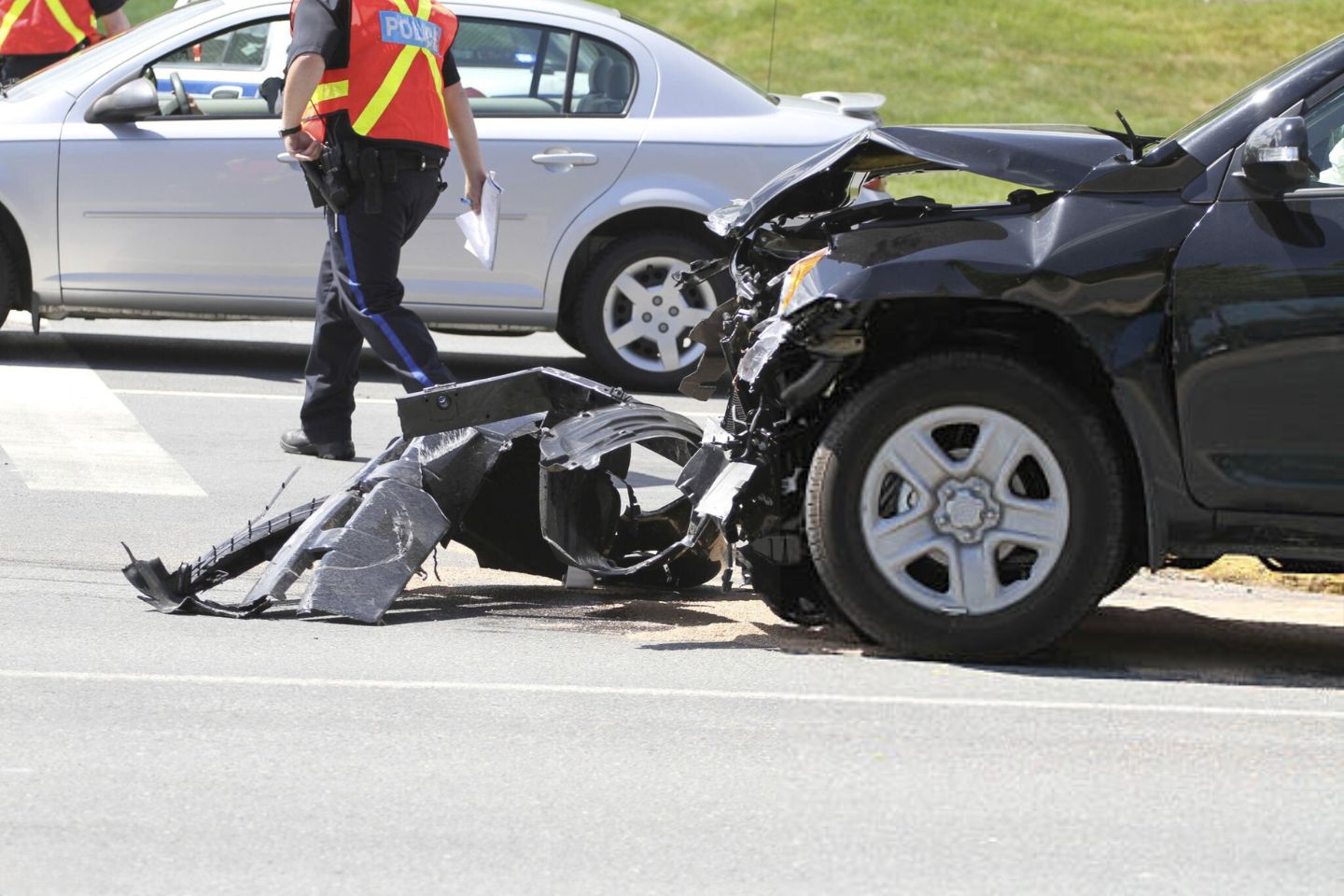

Encountering an accident in San Mateo, or anywhere for that matter, can be overwhelming and disorienting. However, your response in these initial moments can significantly impact the outcome of any subsequent legal or insurance proceedings.
Here are a few tips on how to effectively respond to a San Mateo accident:
Ensure Safety First
In the aftermath of a San Mateo accident, your first priority should always be safety. Check yourself and others involved for any injuries. If there are injuries, no matter how minor they seem, call 911 immediately.
If the accident is minor and the vehicles are obstructing traffic, California law allows you to move them to a safe spot nearby. This not only helps prevent further accidents but also clears the way for emergency services.
Contact Authorities
No matter the severity, it’s important to report the accident to the police. In California, for example, Vehicle Code Section 16000 requires all drivers involved in an accident resulting in injury or death to report it to the DMV. Wait at the scene for the authorities to arrive, as leaving can have legal ramifications, especially if there’s substantial property damage or injuries.
Also, contact your insurance company as soon as possible. When reporting the accident, stick to the facts without speculating or admitting fault, as this could affect your claim.
Exchange Information
Exchange names, insurance details, and vehicle information with the other party involved. If there are any witnesses, their accounts could be crucial, so get their contact information too. Remember, being courteous is important, but avoid discussing fault or liability at the scene.
Document the Scene
Utilize your smartphone to take comprehensive photos of the accident from various angles, capturing both vehicles, any visible injuries, and the surrounding area. Additionally, take into account the presence of surveillance cameras or dashcams in the vicinity, as footage from these sources can provide crucial evidence.
Note down details such as the time, date, weather conditions, and any other factors that might have contributed to the accident, ensuring a thorough documentation process.
Be Cautious in Communicating
Be mindful of what you say following a San Mateo accident. Avoid in-depth discussions about the accident with the other party or their insurance company. Even seemingly innocent comments can be misinterpreted and potentially used against you in any legal actions. It’s safer to let your attorney or insurance representative handle these communications.
Securing legal advice promptly after an accident, particularly in complex scenarios such as multi-vehicle collisions, severe injuries, or hit-and-run incidents can prove beneficial. The Personal Injury Center is here to assist, connecting you swiftly with skilled personal injury lawyers in San Mateo who specialize in handling such challenging cases, ensuring you receive tailored and effective legal advice as soon as possible.
How to Legally Deal with an Accident in San Mateo?
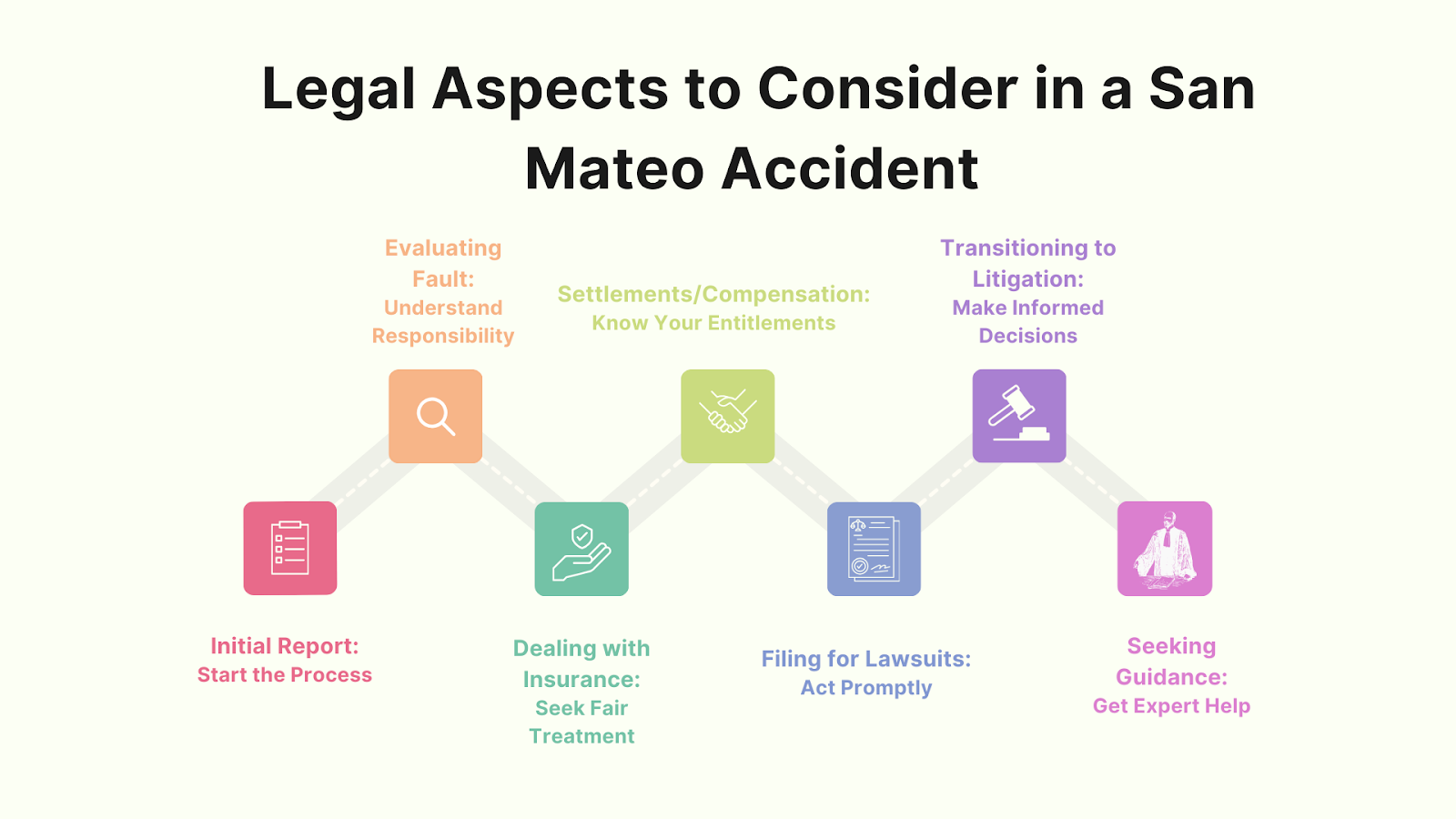

There are several legal considerations one must be aware of following an accident. Below are key aspects, organized under helpful subheadings, to guide you through the process.
Initial Report
After an accident, the initial report is a must to start the legal process. California Vehicle Code Section 20008 mandates that accidents resulting in injury or death must be reported to either the police or the California Highway Patrol within 24 hours. This report creates an official record of the incident, which can be pivotal in any legal proceedings or insurance claims that follow.
In addition to this, drivers are also required to file their own report with the DMV as per Vehicle Code Section 16000 if there is property damage over $1,000, injury, or death. This report, known as the SR-1 Form, is crucial for the DMV’s records and for insurance purposes. It’s important to fill out this form accurately and completely, detailing the circumstances of the accident as factually as possible.
Evaluating Fault
In San Mateo, determining fault in an accident is a nuanced process, guided by California’s pure comparative negligence rule, as established in Li v. Yellow Cab Co., 13 Cal.3d 804. This law plays a pivotal role in personal injury cases, where fault and responsibility are often shared among multiple parties.
Under this rule, each party involved in an accident can be held liable for a portion of the damages, proportional to their degree of fault. For example, if one party is deemed 30% at fault, they would be responsible for covering 30% of the total damages, while the remaining 70% would be assigned to the other party or parties involved.
Different types of accidents may have varying implications for determining fault and liability. Here are key considerations for different accident scenarios:
- Hit and Run Incidents: California Vehicle Code Section 20002 states that a driver involved in an accident must stop immediately and provide necessary information and assistance. Failure to comply can lead to serious charges, complicating fault evaluations and potential compensation, especially in hit-and-run cases.
- Rear-End Collisions: These are typically straightforward in terms of fault assignment. The driver who crashes into the back of another vehicle is usually considered at fault, as per the assumption of following too closely or not paying attention (California Vehicle Code 21703).
- Intersection Accidents: Fault in these accidents often depends on right-of-way laws (California Vehicle Code 21800). Determining who had the right of way at the time of the accident is crucial in these scenarios.
- Accidents Involving Pedestrians or Bicyclists: Special considerations apply, especially under California Vehicle Code Sections 21950 and 21200, which provide right-of-way rules and outline the duties of both drivers and non-motorists.
Dealing with Insurance Companies
Under California Insurance Code Section 790.03, insurance companies are obligated to handle claims fairly and without unnecessary delay. It’s essential to provide them with accurate and factual information about the accident.
In San Mateo, as in the rest of California, insurance companies often scrutinize claims closely, particularly in accidents with substantial damages or injuries. California follows a fault-based (or “tort“) system for car accidents, as outlined in California Civil Code 1714, meaning the driver responsible for causing the accident is liable for the damages.
Furthermore, be aware of your rights when dealing with insurance adjusters. California’s Proposition 213 limits the ability to recover non-economic damages in certain situations, such as if the driver is uninsured. Ensure you understand the coverage of your insurance policy and the at-fault party’s policy.
Settlements and Compensation
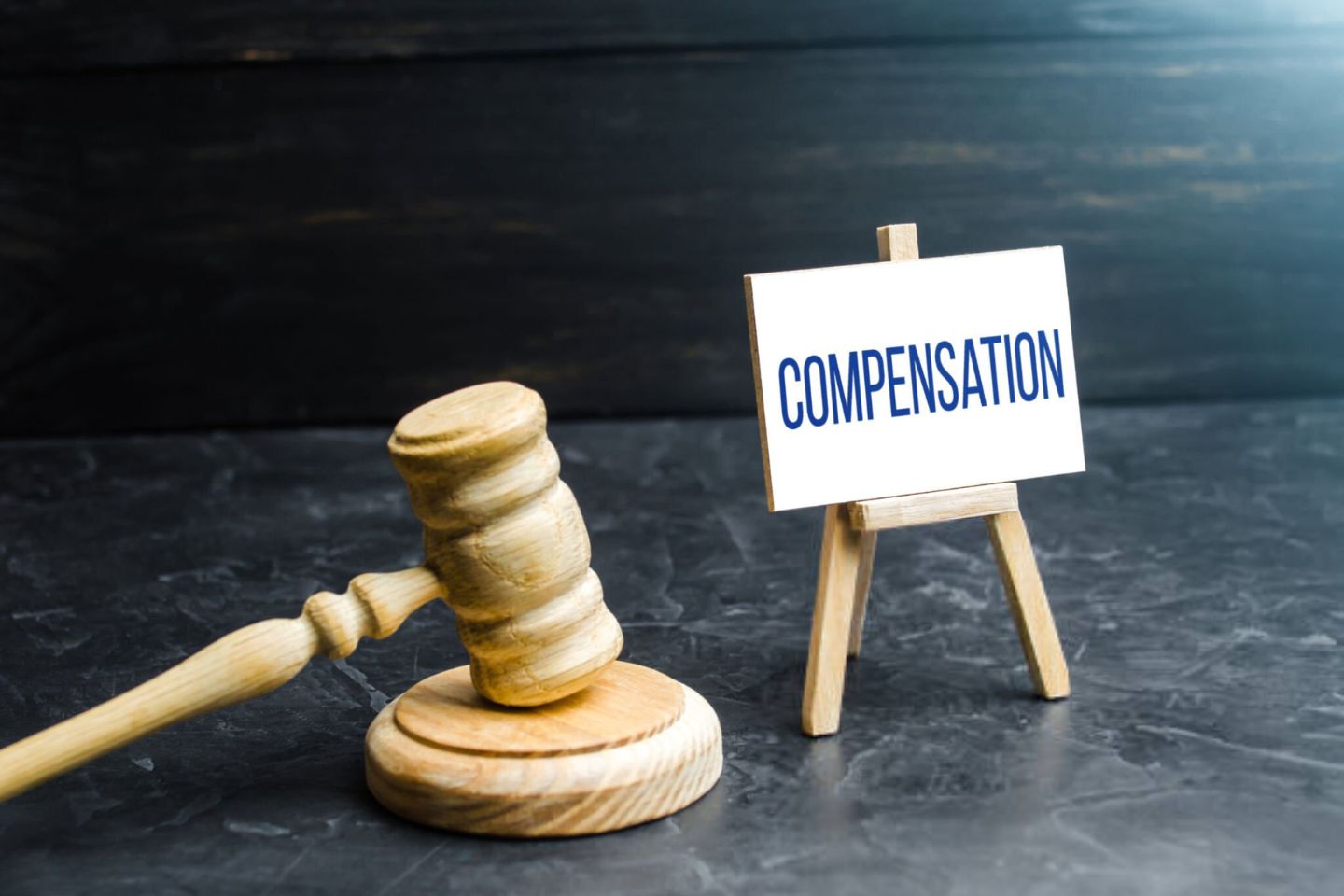

Understanding your entitlements in terms of settlements and compensation is a critical aspect of dealing with the aftermath of a San Mateo accident.
Here’s a breakdown of average settlement amounts for various personal injury claims in California, providing insight into the potential compensation range for different types of accidents.
- Car Accident: Approximately $15,000 – $100,000+
- Motorcycle Accident: Approximately $50,000 – $150,000+
- Truck Accident: Approximately $100,000 – $500,000+
- Bicycle Accident: Approximately $10,000 – $75,000
- Pedestrian Accident: Approximately $10,000 – $150,000
However, it’s crucial to remember that every case is distinct, and numerous factors come into play when determining the final settlement amount. The severity of injuries, their impact on your quality of life, any resulting loss of income, and the specific circumstances surrounding the accident all weigh heavily in the assessment.
Additionally, the skill and experience of your legal representation, the strength of your evidence, and the negotiation tactics employed can also significantly influence the outcome.
It’s also vital to understand the nuances of California’s insurance laws, which can affect your settlement. For example, California Insurance Code Section 533.5 prohibits insurers from providing coverage for any liability to pay punitive damages in a lawsuit. This means that any punitive damages awarded in a personal injury case generally have to be paid out of the at-fault party’s pocket.
Filing for Personal Injury Lawsuits
Understanding the statute of limitations is vital when considering a personal injury lawsuit in San Mateo. For personal injury claims, California Civil Procedure Code 335.1 sets a two-year statute of limitations from the date of the accident. This timeline is critical, as failing to file within this period typically results in the loss of your right to seek compensation through the courts.
However, it’s important to note that there are exceptions to this rule. For instance,
- Extensions to the statute of limitations are possible in scenarios where the injury wasn’t promptly detected or if the victim was a minor when the accident occurred.
- Cases involving government entities may have shorter timelines or specific procedural requirements.
Despite these exceptions, acting promptly within the statute of limitations is essential to protect your right to seek compensation through the courts.
Deciding when to transition from insurance negotiations to litigation is a pivotal step in your legal journey. While many cases are settled through insurance claims, filing a lawsuit becomes necessary when disputes over fault arise, settlement offers are inadequate, or the insurance company is uncooperative.
In more complex cases, like hit-and-run incidents, understanding the severity of the situation and seeking legal advice early can be crucial. Legal professionals experienced in accident cases can offer invaluable guidance on the best course of action, ensuring you make informed decisions within the legal timeframes.
If you’re uncertain about which step to take next, The Personal Injury Center is here to help you. Our team will connect you with knowledgeable legal experts who will protect your rights and guide you toward a fair resolution. These seasoned lawyers specialize in helping individuals navigate the complexities of accident cases in San Mateo. Don’t face these challenges alone – let us be your ally in seeking the justice and compensation you deserve.
Key Takeaways
|



